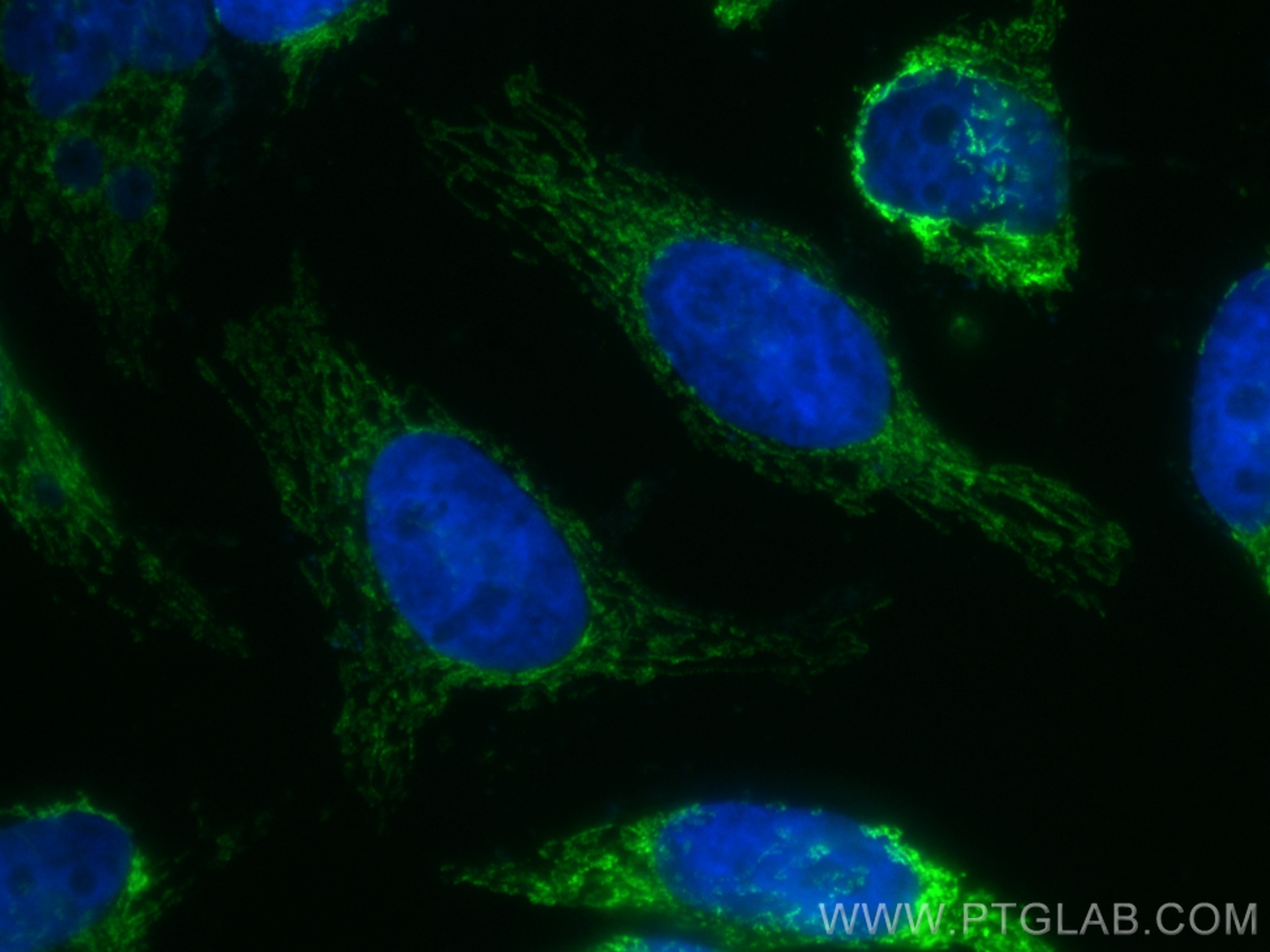ATPB Monoklonaler Antikörper
ATPB Monoklonal Antikörper für IF/ICC
Wirt / Isotyp
Maus / IgG2b
Getestete Reaktivität
human, Maus, Ratte
Anwendung
IF/ICC
Konjugation
CoraLite® Plus 488 Fluorescent Dye
CloneNo.
1A11B9
Kat-Nr. : CL488-66600
Synonyme
Geprüfte Anwendungen
| Erfolgreiche Detektion in IF/ICC | HepG2-Zellen, HeLa-Zellen |
Empfohlene Verdünnung
| Anwendung | Verdünnung |
|---|---|
| Immunfluoreszenz (IF)/ICC | IF/ICC : 1:50-1:500 |
| It is recommended that this reagent should be titrated in each testing system to obtain optimal results. | |
| Sample-dependent, check data in validation data gallery | |
Produktinformation
CL488-66600 bindet in IF/ICC ATPB und zeigt Reaktivität mit human, Maus, Ratten
| Getestete Reaktivität | human, Maus, Ratte |
| Wirt / Isotyp | Maus / IgG2b |
| Klonalität | Monoklonal |
| Typ | Antikörper |
| Immunogen | ATPB fusion protein Ag11177 |
| Vollständiger Name | ATP synthase, H+ transporting, mitochondrial F1 complex, beta polypeptide |
| Berechnetes Molekulargewicht | 529 aa, 57 kDa |
| Beobachtetes Molekulargewicht | 45-57 kDa |
| GenBank-Zugangsnummer | BC016512 |
| Gene symbol | ATPB |
| Gene ID (NCBI) | 506 |
| Konjugation | CoraLite® Plus 488 Fluorescent Dye |
| Excitation/Emission maxima wavelengths | 493 nm / 522 nm |
| Form | Liquid |
| Reinigungsmethode | Protein-A-Reinigung |
| Lagerungspuffer | PBS with 50% glycerol, 0.05% Proclin300, 0.5% BSA |
| Lagerungsbedingungen | Bei -20°C lagern. Vor Licht schützen. Nach dem Versand ein Jahr stabil. Aliquotieren ist bei -20oC Lagerung nicht notwendig. 20ul Größen enthalten 0,1% BSA. |
Hintergrundinformationen
ATP5B, also named as ATPMB and ATPSB, belongs to the ATPase alpha/beta chains family. It is a high affinity HDL receptor for apolipoprotein A1. ATP5B is a subunit of mitochondrial ATP synthase (F1F0 ATP synthase or Complex V ). ATP5B has a calculated molecular mass of 57 kDa and ~5 kDa transit peptide can be removed in the mature form.
Protokolle
| PRODUKTSPEZIFISCHE PROTOKOLLE | |
|---|---|
| IF protocol for CL Plus 488 ATPB antibody CL488-66600 | Protokoll herunterladen |
| STANDARD-PROTOKOLLE | |
|---|---|
| Klicken Sie hier, um unsere Standardprotokolle anzuzeigen |



